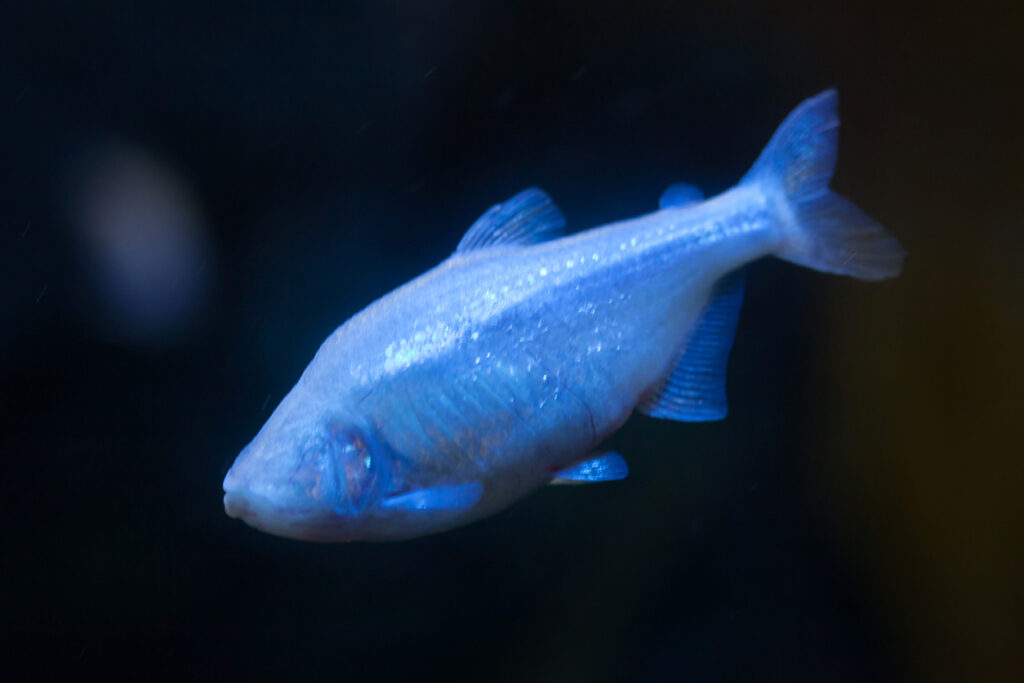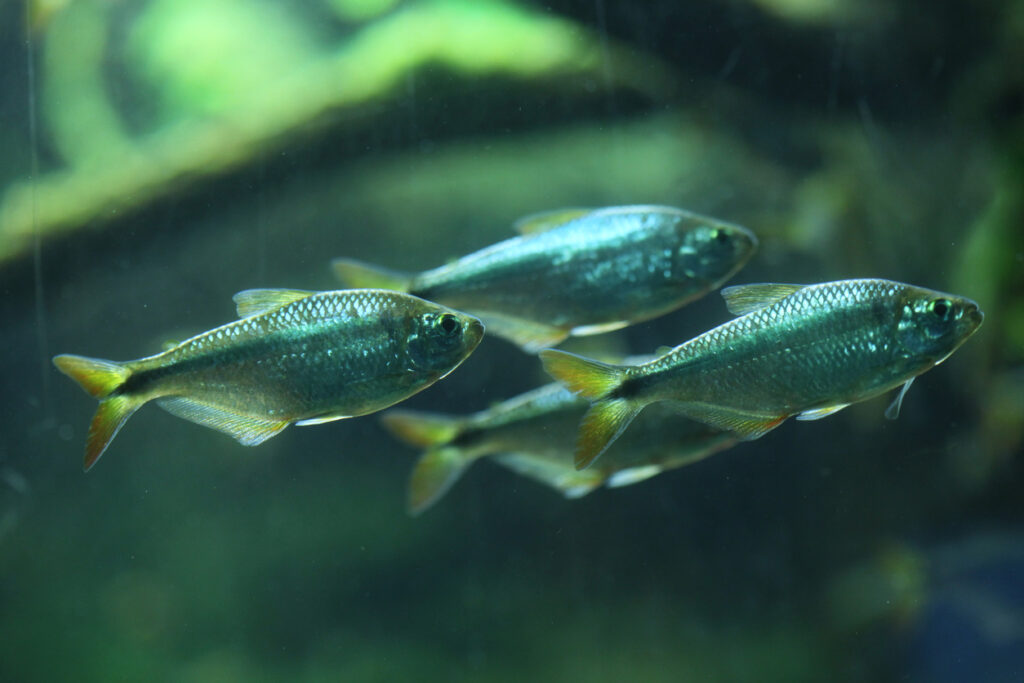One of the most important senses an animal can have is the ability to see. It helps to navigate space, find food and mate. However, the ability to see isn’t of much use when living in the dark depths of Mexico’s caves, as is the case with the Blind Cave fish.
The Blind Cave fish, also known as the Mexican tetra (Astyanax mexicanus) is a strange looking species, no less because of their complete lack of eyes and translucent pink skin, however, they are a fascinating example of how the environment can directly impact how an animal looks, feeds, and behaves.
Why is this species of fish blind?
While a blind fish might seem completely counterproductive, it’s actually very clever. Blind Cave fish are blind on purpose, because they have evolved to survive without the use of their eyes.
The eyes and parts of the brain that process visual information use a lot of energy to operate, which means that when living in environments where food is scarce, nature will often take its course to ensure that the animal is able to conserve its energy for the absolute necessities, such as keeping their vital organs working.
The Blind Cave fish evolved to eventually have no eyes, and have survived long enough to pass this characteristic onto its offspring. The species is able to conserve its energy from not having to try and see in the murky depths, and instead using that energy to hunt for food and mate. This is known as a process called pleiotropy, in which the genes usually needed for eye development are reassigned to other areas, like increasing the number of taste cells for finding food.
The complete lack of sunlight is also the reason behind their almost see-through skin which lacks a lot of pigmentation, with only a slight pink hue that can be compared to albinism.

Where do Blind Cave fish come from?
Blind Cave Fish originate in Mexico, the United States and Guatemala, which is why they’re also known the Mexican tetra.
There are actually two types of this species – one with eyes and one without. While one has evolved to have no eyes because of the depths it lives at, the other type lives in fast-moving rivers and still relies on its eyesight to navigate its environment and find food.
Mexican tetras are freshwater fish who like to live in tropical waters of about 20-25°c. They are quite hardy fish meaning they can survive within quite broad parameters, but are still sensitive to big changes in the environment such as large spikes in ammonia from decaying matter.
What do Blind Cave fish eat?
Because these Cave fish live so far down in pretty inhospitable conditions, food can be scarce, meaning their options are limited.
Despite this, Blind Cave fish survive on worms, snails, other small fish, and insects. They are also considered omnivorous because they can eat algae and other plant matter when other animals aren’t available to eat.
If you’re wondering how they find their food, then wonder no more. All fish have organs called lateral line organs which help detect water displacement. Over time, Blind Cave fish have evolved very sensitive lateral line organs which means they can find their way around without the need for sight.
They can also remember where objects are to stop themselves from constantly bumping into things, despite the common myth that fish have bad memories. This can, however, take time when first introduced to a new environment.

What are Blind Cave fish like?
As with most fish in the Tetra family, the Mexican tetra is a naturally schooling fish which means that they like to swim around in groups of at least 6. The blind variation of the fish doesn’t seem to be a schooling fish as such, but they do tend to congregate in groups when in the wild.
They are known to be quite peaceful fish although they can become more aggressive as they age and can sometimes nip tankmates if they mistake them for food. In the wild, and in aquariums, they live quite happily with other fish species.
Are there other blind fish species?
There are a whole host of cave fish species, some of which are also blind. This includes the southern cavefish (Typhlichthys subterraneus) found in eastern US, and the Ozark cavefish (Amblyopsis rosae). There are also a number of cave shrimp that are blind, including the British cave shrimp (Niphargus glenniei) and the Kentucky cave shrimp (Palaemonias ganteri). Most blind fish live in caves or other dark dwellings, and have no use for good vision.
That’s all you need to know about the Blind Cave Fish. They truly are fascinating fish, with more to them than meets the eye. You will be able to see these fish, even if they can’t see you, at our Edge of the Rainforest exhibit.
